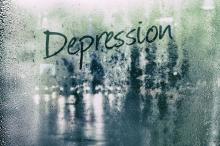Depression screening among U.S. adults was 1.4% for the period from 2005 to 2015 despite a 2009 recommendation for routine screening from the U.S. Preventive Services Task Force, data from a cross-sectional study show.
Depression affects about 16 million adults in the United States but remains underdiagnosed, wrote Sandipan Bhattacharjee, PhD, of College of Pharmacy at the University of Arizona, Tucson, and his colleagues.In a brief report published online in Psychiatric Services, the researchers reviewed data from the National Ambulatory Medical Care Survey for the years 2005-2015. The study population included adults aged 18 and older without a previous history of depression. Overall, 105 million ambulatory care visits to nonpsychiatrists during the study period included depression screening. About two-thirds of the study population fell into the 18- to 64-year-old age range, 60% were women, 73% were white, and 89% lived in cities.
A multivariate analysis showed a significant increase in the likelihood of depression screening each year (odds ratio, 1.12), the researchers noted, and screening rates increased significantly in the years after 2009 in a piecewise regression analysis, Dr. Bhattacharjee and his associates reported.
The investigators also found links between the amount of time patients spent in physicians’ offices and higher screening rates. “Since increasing the length of time of the actual visit to the physician may be difficult, it is recommended that other health care providers in these settings be trained to provide screening,” they wrote.
The study was conducted before an updated USPSTF recommendation for screening regardless of the presence of enhanced services, the researchers noted, and “the low screening rate observed likely reflects the earlier recommendation,” they said. The findings were limited by several factors, including the cross-sectional study design that prevents causal inferences and the variation in depression screening methods, the researchers noted.
However, the results suggest that depression screening in primary care remains low – even in the years since the 2009 recommendation, they said.
Dr. Bhattacharjee disclosed no financial conflicts.
SOURCE: Bhattacharjee S et al. Psychiatr Serv. 2018 Jul 9. doi: 10.1176/appi.ps.201700439.


